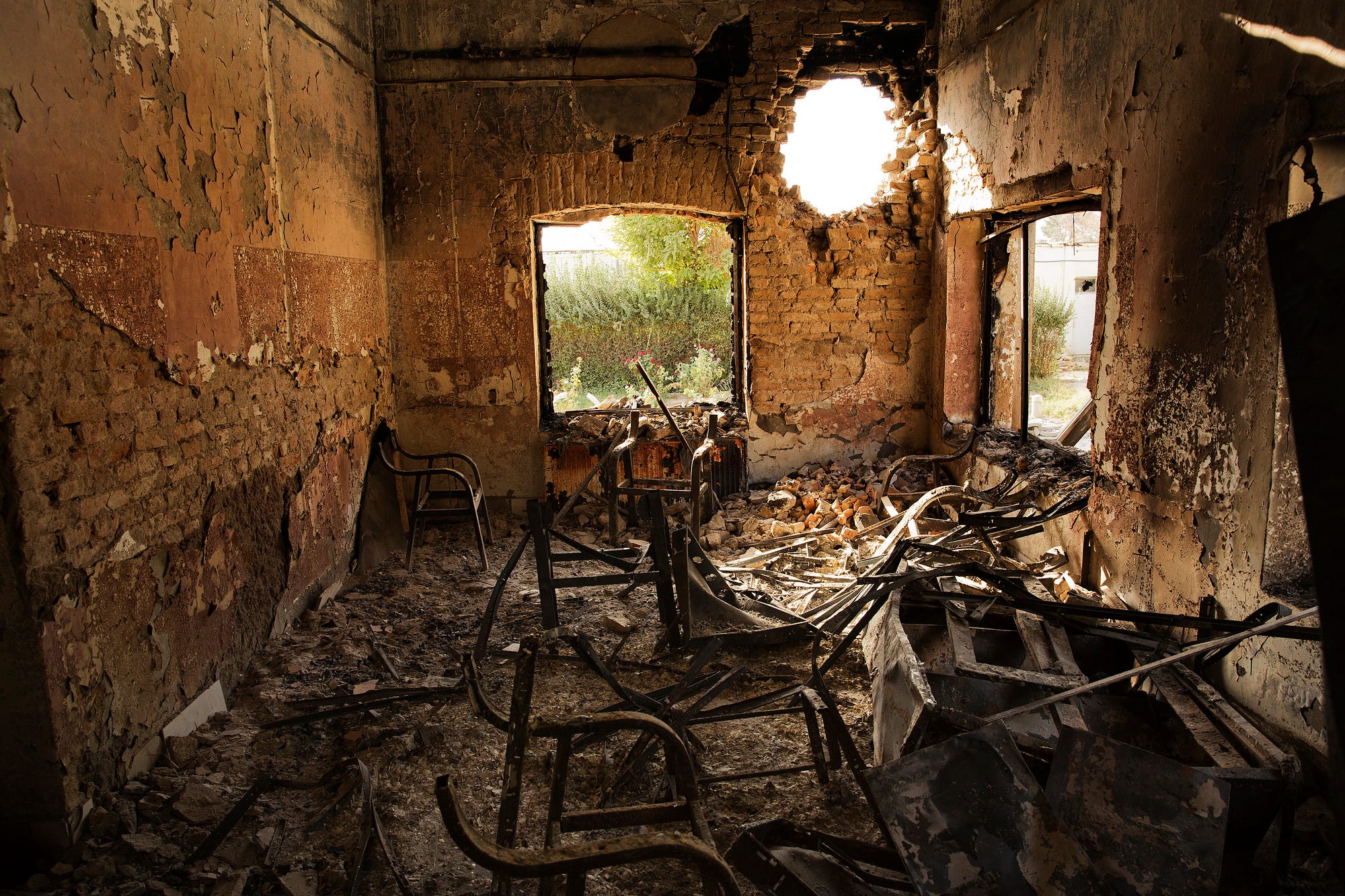
With the execution of Kelly Gissendaner recently in Georgia and many others waiting on death row, we are seeing executions being rushed, not only on the mainland but elsewhere. Death sentences were also rushed in Afghanistan on October 3d, with the bombing of an MSF hospital, killing 12 staff members and 10 patients, including children, and wounding 37 people. Both Kelly Gissendaner and the MSF hospital executions were justified under the same ideology.
It did not matter that this hospital in Kunduz was the only running hospital in the North East of the country. It was hectic at the hospital in the past weeks because of the battles between the Taliban forces and the Afghan military. Of course these battles sent many civilians, men, women and children to this hospital. MSF rightly treats everyone regardless of their origin: Taliban, military, and civilian casualties. This principle of equal treatment has been questioned in past decades with invasions, dehumanization campaigns and the criminalization of humane and compassionate actions.
The bombing of the MSF hospital by US Air Force is a moral failure and a crime, and yet the immediate response by US and Afghan authorities was to make it appear as normal collateral damage. They sent all their “thoughts and prayers” while asserting their legitimate role of deciding who may live and who must die, to borrow from Achille Mbembe.
At the time of the announced precise and clean war, the death toll of civilians, women, children and healers is rising. The drone program has already proven to be in the logic of an arbitrary decision of who may live and who must die. The collateral damages were in the hundreds and still unaccounted for; the drone program is the warrant of peace, they say.
This ideology that justifies these crimes runs on contradictions; it legitimates deterritorialization of arbitrary death sentences while claiming the restoration of peace.
Let’s bring a poem by Pramila Venkateswaran to examine this modern ethical and moral depravity:
Between Good and Evil
Dark blossoms wither on healthy soil,
indigo embracing light cannot be pried apart.
Ecological activists turn terrorists, good Samaritans-
turned-politicians walk off with money saved for the poor.
Peace lovers during war execute prisoners without trial.
We throw bombs, then food, on the same piece of land.
Violent Hindus desire a “pure” country of Hindus.
Each political party sounds like its rival.
Sense is nonsense is sense. Every exhortation
means its opposite and not: Morality is a crapshoot.
(Photo Credit: Medium / Victor J. Blue)


